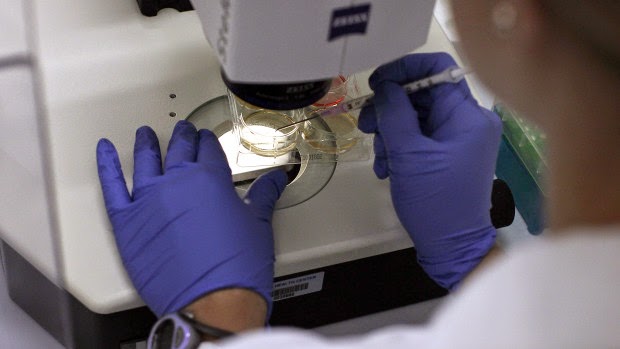The scientific possibility of two people of the same-sex having a biological child has circled the Internet for a few years thanks to a study involving stem cells from rats. But according to new work published in the journal Cell, scientists for the first time have been able to recreate the process using stem cells from humans. This, of course, brings the ability for gay couples to have biological children together a little closer to reality.
CBS News has more:
ATLANTA (CBS ATLANTA) – A stem cell research breakthrough achieved by Cambridge University shows the first fully “manufactured” baby can be created from the skin cells of two adults of the same gender – potentially opening the door to same-sex couples having their own babies.
Researchers from Cambridge University teamed with Israel’s Weizmann Institute of Science to pair stem cell lines from embryos with the skin of five different adults, according to the study published in the journal Cell. The medical experiment was previously successful in creating live baby mice but this marks the first study on humans in which the engineered cells created in the laboratory were compared to aborted fetuses to determine an identical match.
“We have succeeded in the first and most important step of this process, which is to show we can make these very early human stem cells in a dish,” Azim Surani, Wellcome Trust project leader and professor of physiology and reproduction at Cambridge, told the Sunday Times.
 |
| (Photo by Spencer Platt/Getty Images) |
The team says it is possible to make human egg and sperm cells from the skin of two adults of the same gender – prompting interest from people with infertility diseases and gay couples.
“It has already caused interest from gay groups because of the possibility of making egg and sperm cells from parents of the same sex,” Jacob Hanna, the specialist leading the project’s Israeli arm, said to the Sunday Times.
 |
| Azim Surani who is leading the cell project, was also involved in the research that led to the birth of Louise Brown (Welcome Trust) |
The researchers noted to the Sunday Times that the development raises serious ethical issues, but many can potentially benefit from the technique they’ve been testing on humans since creating artificial human eggs and sperm for the first time last year.
The Centers for Disease Control and Prevention reports that Assisted Reproductive Technology (ART) was performed at 456 clinics in the U.S. in 2012, resulting in 51,267 live births. Although still relatively “rare,” just over 1 percent of all infants born in the U.S. each year are conceived using ART methods.
Expect an ethical war to be waged on the process as it comes closer to an available asset for same-sex couples, though.









0 Comments